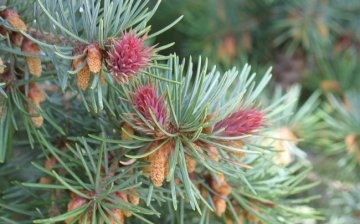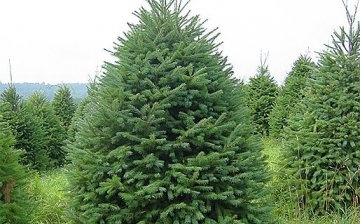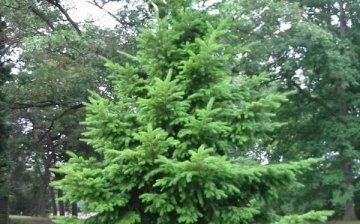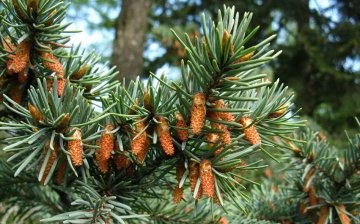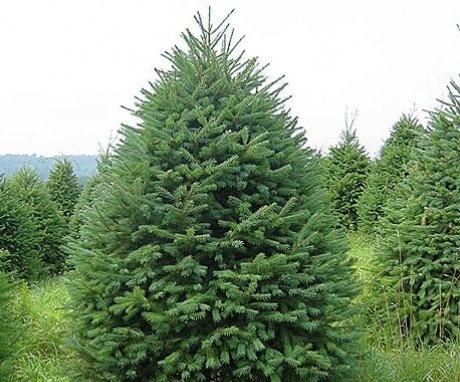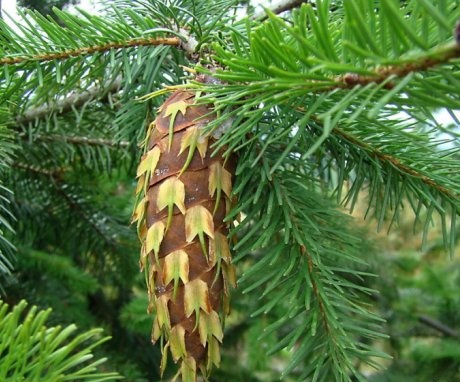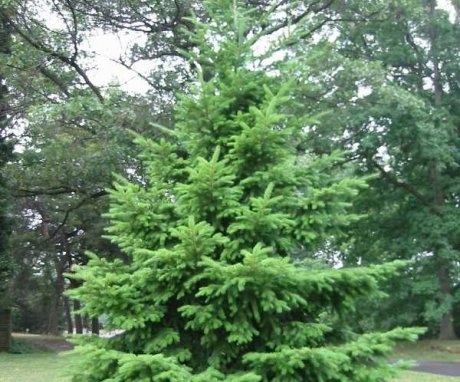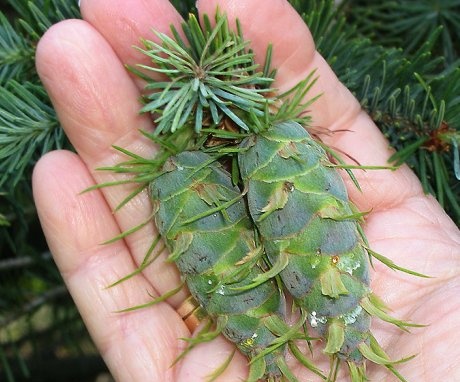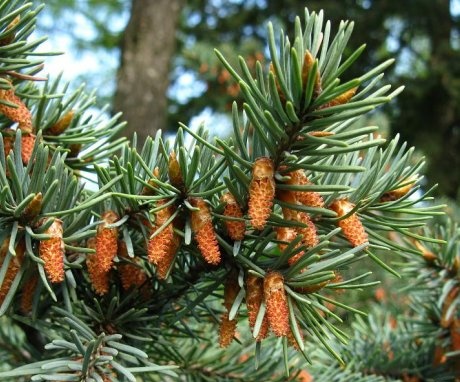Pseudo-slug is an unusual species of the pine family
Many have heard that conifers are often grown in gardens. Usually it is spruce or fir... But many gardeners have not heard of such a tree as a pseudo-tree, and they only wonder what kind of curiosity it is. The fact is that many can see a pseudo-lass in parks, it is practically indistinguishable from a fir. Therefore, passing by this wondrous tree, people think that this is an ordinary coniferous plant, typical of our region.
However, the power and luxury of the crown of a pseudo-tree is much superior to a spruce or fir. It is easier to grow, the tree is unpretentious and grows twice as fast. Its distinctive feature is the amazing beauty of the cones and the juicy, lush crown. Despite the unpretentiousness, pseudo-life needs to be able to grow and care for it. Plant, grow, and grow one of the most luxurious and attractive conifers in this quick gardening guide.
Content
- Description of pseudo-life
- Common varieties
- Conditions for growing pseudo-suga
- Reproduction methods
- Care Tips
Description of pseudo-life
Features of the structure of the tree:
- Pseudo-slug belongs to the pine family and is a powerful tree with a dense cone-shaped crown. As it grows, the shape of the tree changes and becomes round, this happens at about the age of 50.
- A pseudo-slug can reach a length of 100 meters, in the strip of our country 50 meters.
- The branches or legs of the tree extend perpendicularly from the trunk, and the delicate shoots hang down. Very similar to spruce or fir.
- The cones of the tree are very peculiar - hanging with bent scales. Reach sizes up to 12 cm in length.
- Some types of pseudo-suga have purple-tinged bumps at the mouths - an impressive sight to behold.
- The crown of the tree is bluish at the bottom due to the emitted resin.
- The pseudo-suga needles resemble fir, but they are narrower and bluish. If you grind a branch of a tree, you can feel a delicate pine aroma.
An unusual tree was first discovered in North America. The discoverer was the doctor Archibald Menziz from Scotland. But due attention was not paid to the new species. Re-acquaintance with the amazing ephedra occurred later. A brave and brave traveler, botanist David Douglas rediscovered the tree, but did not leave it unattended. It was he who managed to make the seeds pseudo-shipment to England and start her breeding in Europe.
At first, there was a real confusion in the assignment of a tree to genera. At first she was given the title of the genus of fir, but then they still decided that this was not true. And they began to attribute her to the genus of hemlock. Later, she was already singled out as a completely separate genus and began to be called a pseudo-snake or a false-snake. However, many botanists habitually refer to it as Douglas fir or Douglas fir in honor of the discoverer.
An interesting fact is the possible growth period of the pseudo-life - up to 1000 years.
For example, in America, a tree of this species was discovered at the age of 700 years! The trunk diameter reached 4 meters, and the length was more than 100 meters. Unfortunately, such relics are cut down and used commercially.
Growing a luxurious pseudo-life is much more interesting than slowly growing. Already in the second year, the gardener will see a small tree formed.The approximate growth per year will be 40-50 cm, and this is in the conditions of our harsh climate. You can safely replace the spruce with this genus, since it tolerates frost well and is weakly exposed to toxic waste, which is a frequent occurrence in cities.
Common varieties
All over the world, four types of false sug are widespread and known. They grow wild in North America, China and Japan. In general, taking into account all the data collected by botanists, there are about 18 tree species.
In Europe, only one species is grown and takes root - the pseudo-slug of Menzies or Menziz.
Breeders have bred a sufficient number of varieties of this species. Gardeners prefer to breed varieties of medium or low height, as they prefer to contemplate soft paws and bumps at eye level, rather than from a bird's eye view.
Among the many varieties, there are:
- "Blue Wonder" - reaches a length of five meters, has a bluish crown, conical. It grows rather slowly when compared with the wild pseudo-life.
- "Mayerheim" - reaches a length of up to 10 meters. The crown looks like a cylinder, the branches are short, the color of the needles is bluish.
- "Pendula" - this variety is interesting in that the shoots of the branches fall down. The tree resembles a weeping willow. The color of the crown is gray or bright green.
- "Holmstrup" - a tree reaches a length of three to eight meters. The shape of the crown is conical, dense, the color of the needles is bright green.
- "Serpentine" - a variety bred in Germany and is a tree with curved branches. They twist and form a very interesting crown, hanging a little. The trunk itself also curls.
These varieties are the most common and widely used by gardeners for effective garden landscaping. Varieties of undersized pseudo-suga are planted together with other vertical plantings. You can also divide the genus of false sugi according to the shape of the crown. Gardeners love the cushion and weeping varieties of wood. They look very impressive, like giant people in fluffy clothes walking in the garden.
Conditions for growing pseudo-suga
The pseudo-slug is unpretentious, but it also has its favorite soil. She prefers well-drained and loamy soil. Dislikes sands and heavy clay. Can tolerate podzolic and calcareous soils.
The optimal substrate for landing will become a mixture of leafy earth, peat and humus. The ratio of parts is 3: 2: 2. If the land where the gardener is going to plant a seedling is very dense, it is necessary to lay drainage layers at the bottom of the pit - broken brick, expanded clay and sand.
In damp, dense soils, pseudo-sludge will grow poorly.
With regard to lighting, you should select not too dark areas of the garden. The tree prefers open spaces, moderately lit. It is better not to expose young plants to direct sunlight. Slightly shaded areas that are not damp are perfect for this genus of conifers. If the location is right, caring for the tree won't be a hassle. It will grow beautifully by itself and reach for the sun.
Reproduction methods
Experienced gardeners recommend propagating pseudo-life using seed... They form in buds once every 2-3 years. Seeds are planted in the ground in November to a depth of 2 cm and grown at home.
It is customary to plant a seedling on an open area, the age of which has reached 5 years.
Seed propagation is a laborious process, but it allows you to grow a large number of seedlings. They will be stronger and more resilient. Saplings are planted to a depth of one meter.
The second breeding method is grafting:
- Cuttings are cut from a coniferous plant at the age of 3-4 years, preferably from lateral shoots.
- The pruning procedure is best done in the spring, after the tree wakes up.
- The stalk should be together with a piece of wood at the base - with the heel.
- If it is not immersed in a growth stimulator, the cutting will most likely not take root.
- Plant it in the lung, mulched substrate and grown at a temperature of 20 ° -23 °.
- It is necessary to monitor soil moisture and lighting.
- It is better to keep the seedling at home in a shaded place so that the sun's rays do not fall on it.
Gardeners prefer to propagate pseudo-life with seeds. Let it be long, but reliable. The plant turns out to be strong and more resistant to Russian frosts.
Care Tips
Caring for a bogus woman is pretty simple:
- At first, as soon as a young seedling is planted, you will have to be more careful about lighting and sudden frosts. If the plant is exposed to direct sunlight, it must be covered, otherwise the delicate crown will burn. The same goes for frosts. Often in Russia and in the middle of summer frosts can hit, let alone spring. In this regard, cover the young seedling with a non-woven material until you are sure that there are no temperature changes. This concern takes place only in the first year of growth. In subsequent years, such attention will no longer be needed, the tree will gain strength and acclimatize. For the winter, it is necessary to cover the young plant, its trunk. An adult plant does not hide for the winter. Spreading branches can be tied up so that the weight of the snow does not break them.
- Top dressing pseudo-lasts only in the first year - disembarkation. In the spring, she is fed complex fertilizers for conifers. Many people mix humus and peat into the soil if they see that the soil is depleted in the fifth or sixth year of life.
- It is necessary to constantly loosen the soil to access air to root system.
- You should also carry out pruning crowns in the first few years of growth. Lateral shoots are pruned for fluffier and denser growth in the future. The pseudo-lug tolerates this procedure well, so do not be afraid to cut off too much.
- Watering carried out regularly as the soil dries up. One tree takes about 10-12 liters of water. She is very fond of such a procedure as sprinkling. Spray plant with warm, preferably rainwater. This is especially true for young seedlings and periods of drought. Despite the fact that the pseudo-slug is drought-resistant, constantly monitor the soil moisture. The tree loves moisture and moderate light.
- One of the advantages of a false suga is its resistance to pests and disease. Very rarely, aphids or fungus may appear on it. In the process of observing the cultivation of these plants in our latitudes, only 3 cases of pest infestation were recorded. So there is no need to worry about the safety of the coniferous beauty.
Care and cultivation of this amazing coniferous plant is not a hassle. It is unpretentious and does not require special skills and abilities from the gardener. Having successfully chosen the site, the pseudo-slug will thank the owner with good growth and a surprisingly fluffy crown for the second year. New twigs and unusual buds will appear every year. The gardener will admire her growth and beauty, without exaggeration, all his life.
More information can be found in the video.



